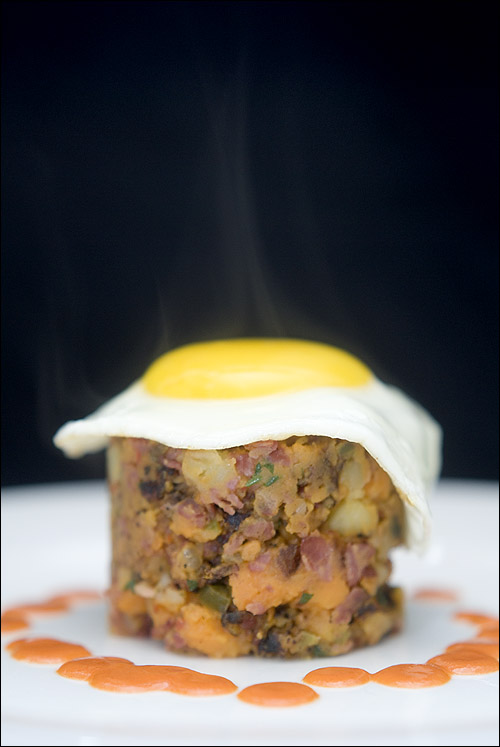 |
| Biscuits and sausage gravy. © Ryan Schierling |
Thursday, March 31, 2011
Beware the kalends of April.
Sunday, March 27, 2011
Rocks. Salt. Lime.
 |
| Margarita. © Ryan Schierling |
Fresh lime - cut in wedges
Kosher salt - (this should be a pantry staple anyway)
Tequila - go with what you like or can afford, either gold or silver. Sauza seems to be a good starting choice for mixed drinks.
Limeade - Simply Limeade and Odwalla "Summertime Lime" are both very good and are sweetened with real sugar!
Wet the rim of the glass with a slice of lime.
Turn the glass upside-down onto the plate of salt to get that delicious salted rim.
Fill the glass with ice.
Squeeze a wedge of fresh lime into the glass.
Pour a shot of tequila over the ice.
Throw in a fresh slice of lime and fill the rest of the glass with limeade.
Monday, March 21, 2011
Hangover breakfast.
 |
Corned beef hash. © Ryan Schierling
|
"Mmmhmm."
"I need to go to the grocery store so I can get all the stuff to cook what I dreamed about, what I made in my dream."
"Sweetie, I love you, but that's ridiculous. We have plenty of food in the house already. You're just going to destroy the kitchen and leave a sink full of dirty dishes."
"But... but there were sweet potatoes, and leeks, and hash browns, and corned beef and... and bacon..."
"(Grumble.)"
Wednesday, March 16, 2011
The Road Food to Perdition.
 |
Spanish For 100's Corey Passons, somewhere in mid-America. © Ryan Schierling
|
Austin is the "Live Music Capital of the World."
The South by Southwest Music Conference and Festival – which currently draws some 12,000-plus registrants just for the music portion of the event – is a yearly influx into this city like none other. It's a lot of bands, because it's a lot of fans and the numbers are growing every year.
The majority of those bands are touring around the SXSW dates, and the festival is not just a destination, but one more stop on the highway to load in, play, and load out before hitting the road again for the next city. While they are here, they will no doubt ask someone "What's the must-eat" thing in Austin before we leave in the morning?" Or maybe they've played here many times before, and really dug on that Casino El Camino burger, great Indian food and beer at Whip-In, or some incredible taco joint on the east side that the bass player found and they've been going back ever since.
For non-Republic-of-Texas bands on tour, Austin is road food.
Friday, March 4, 2011
Olive Fillet
 |
| Olive Fillet. © Ryan Schierling |
Subscribe to:
Posts (Atom)
